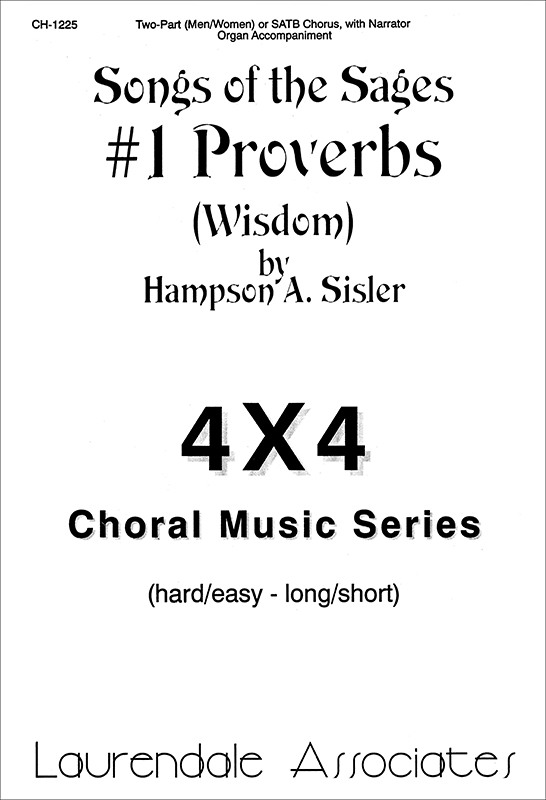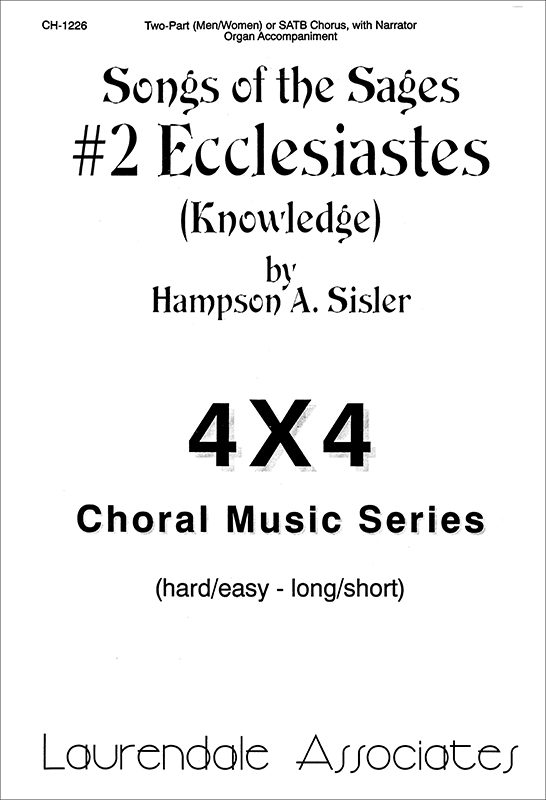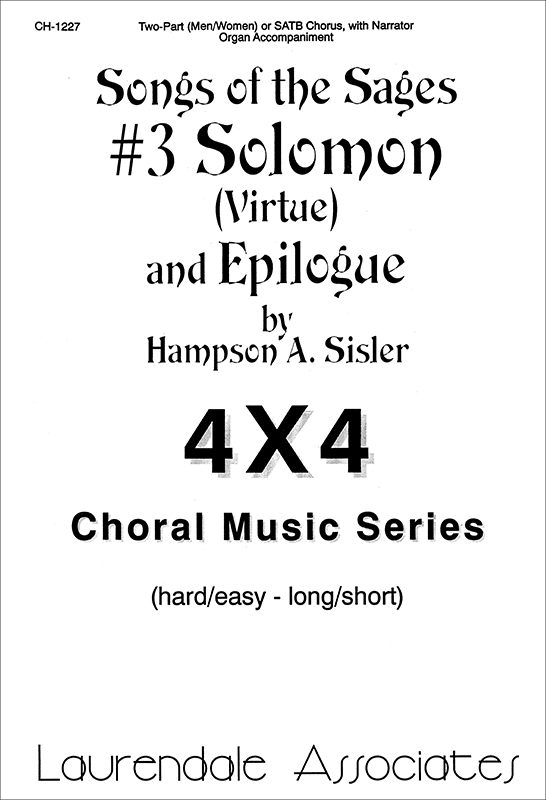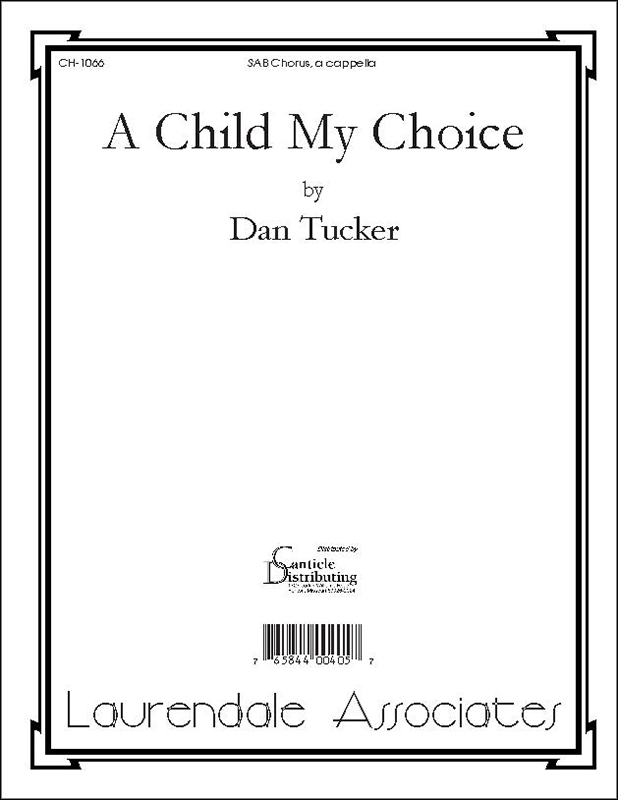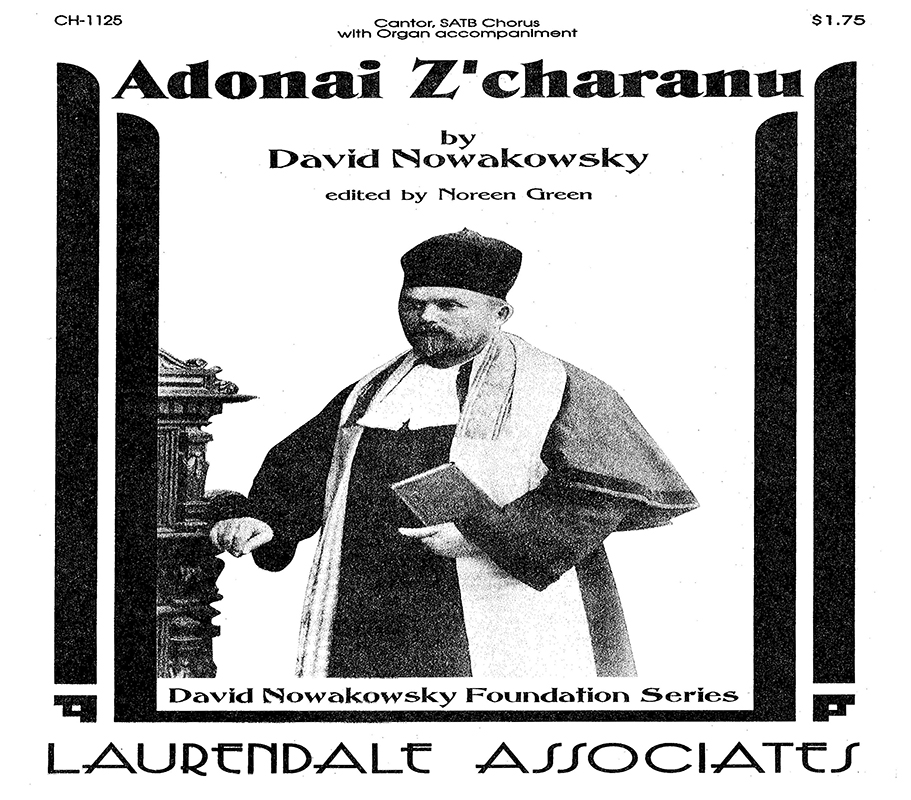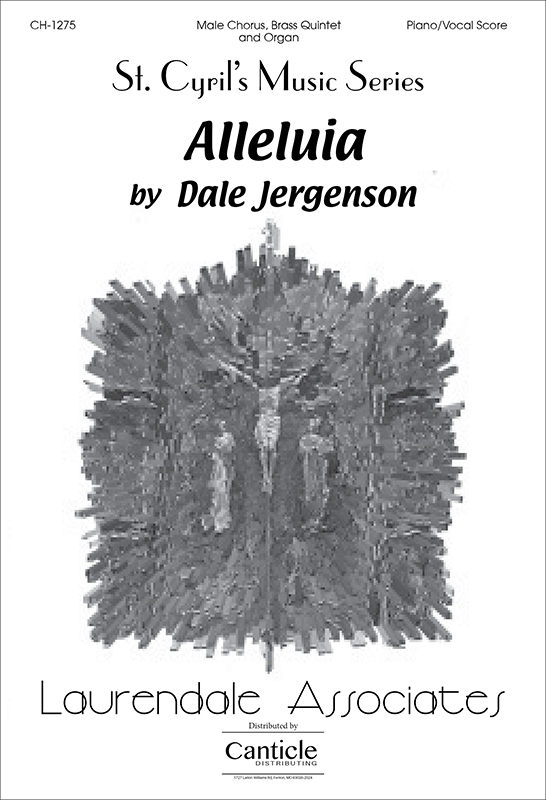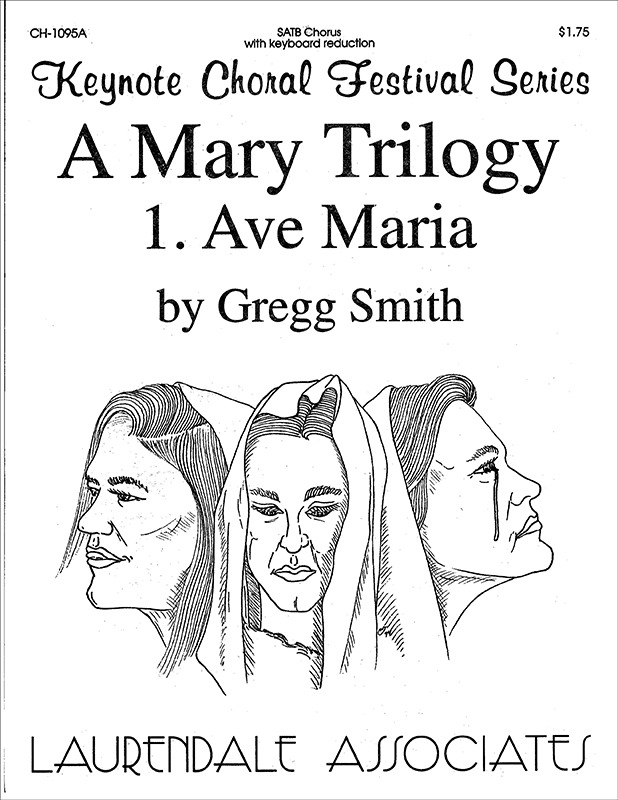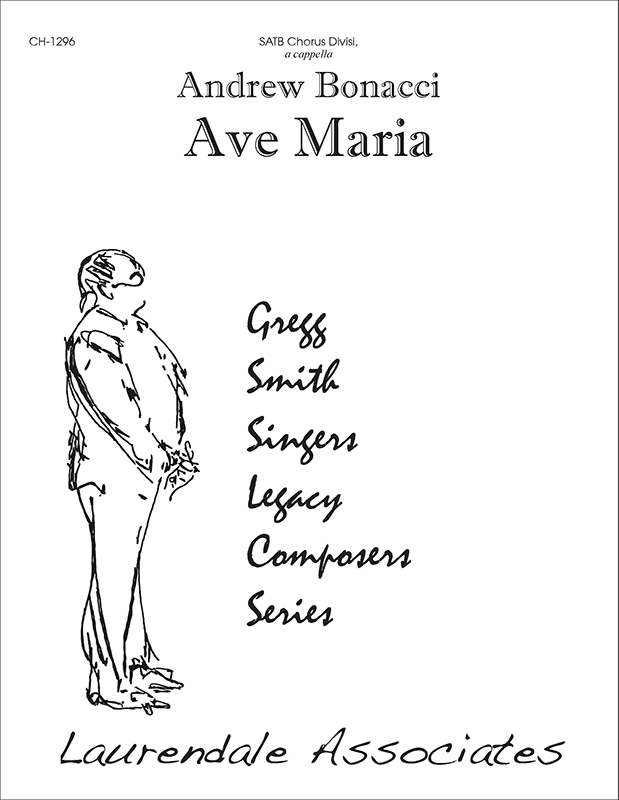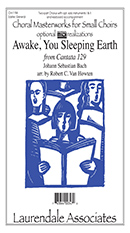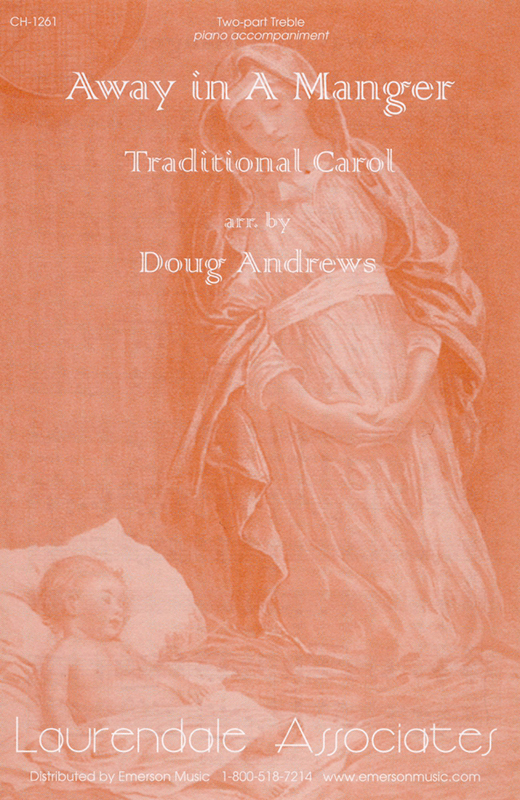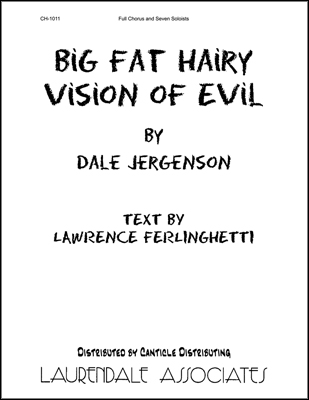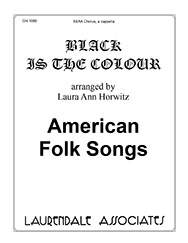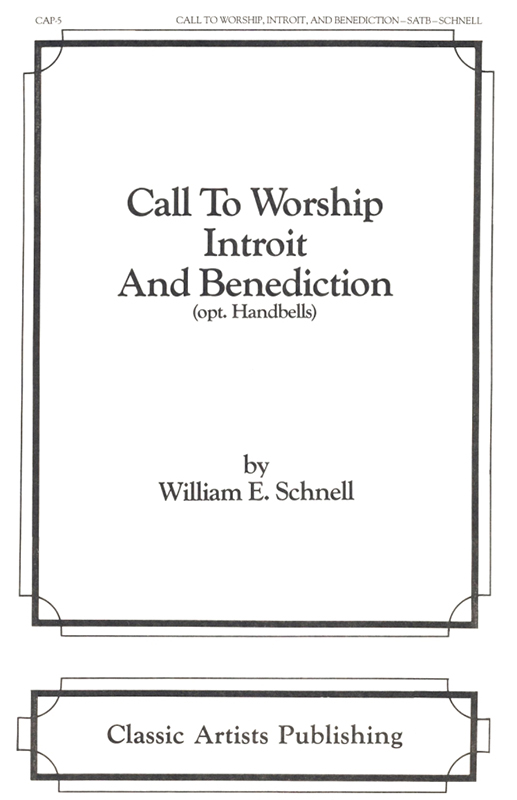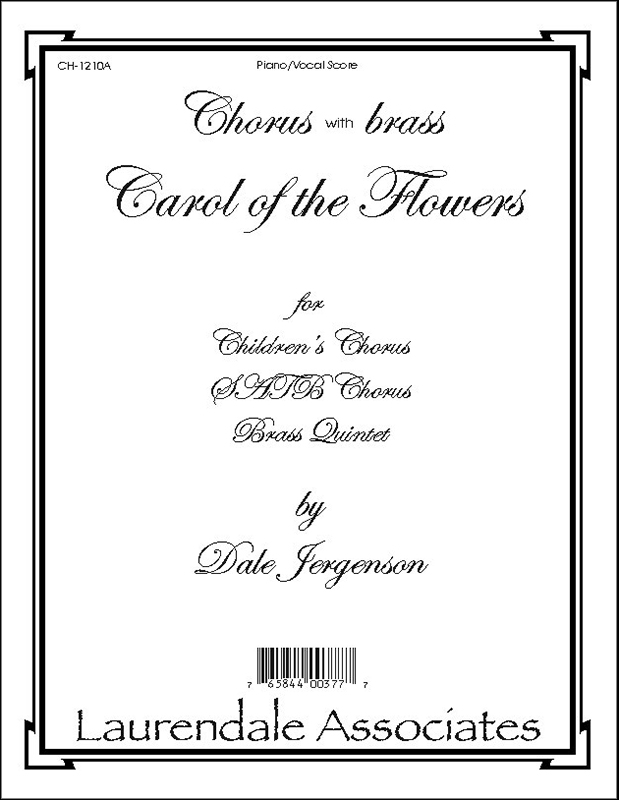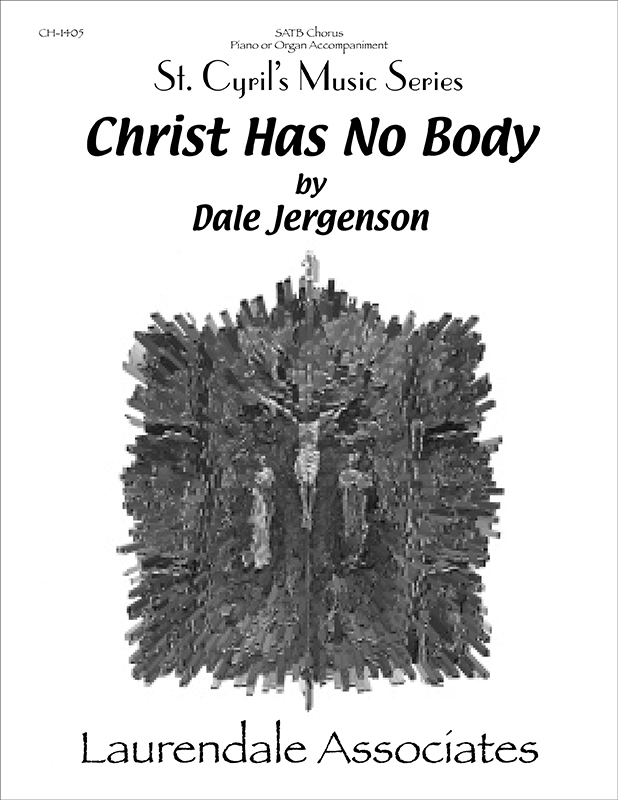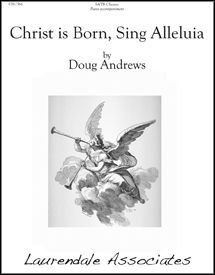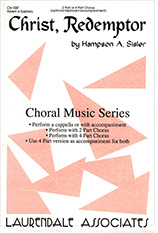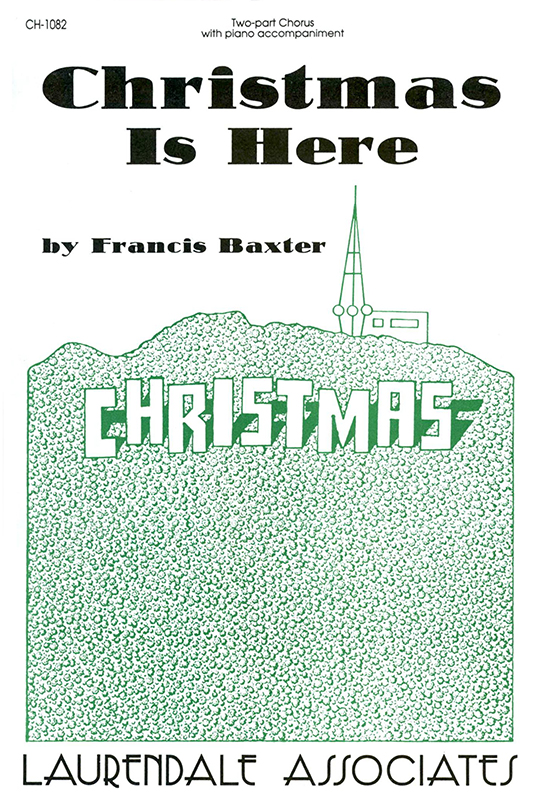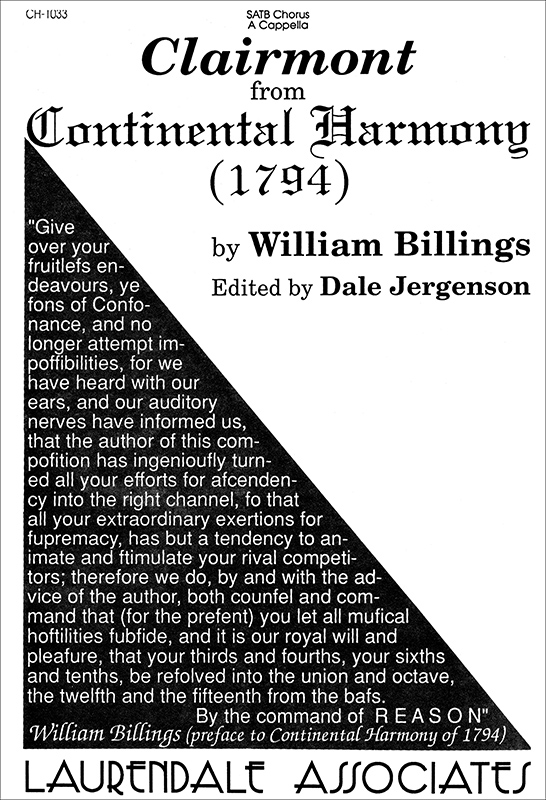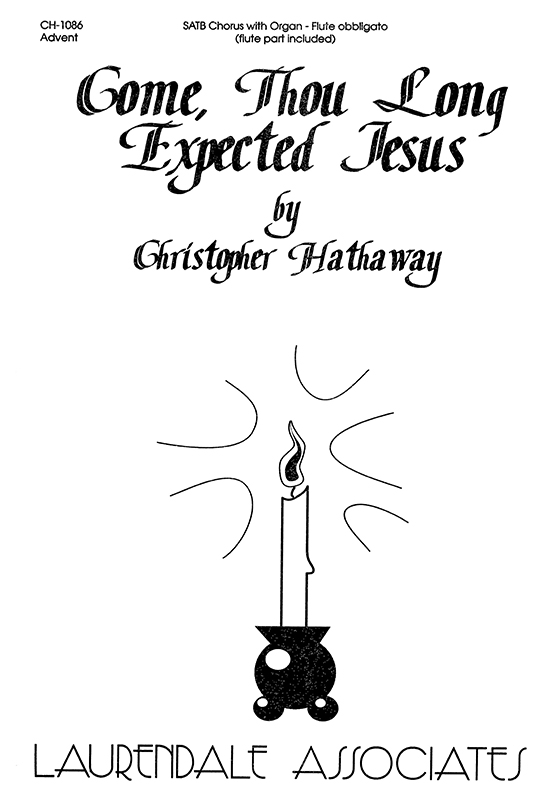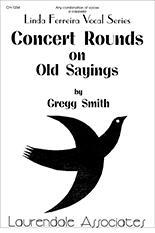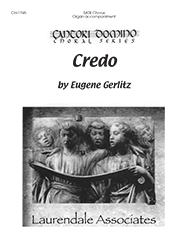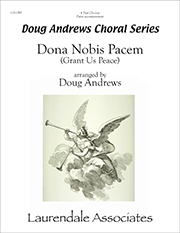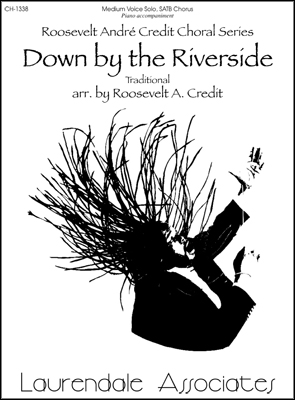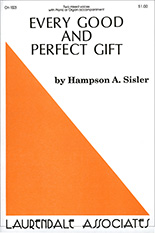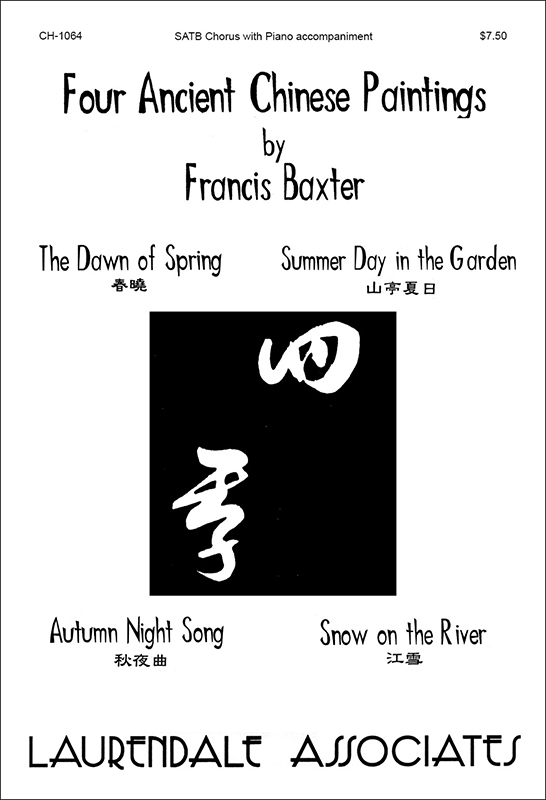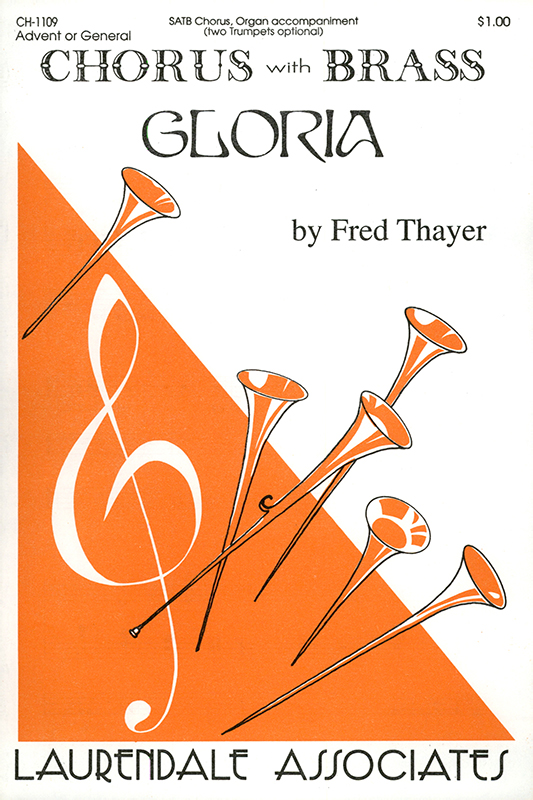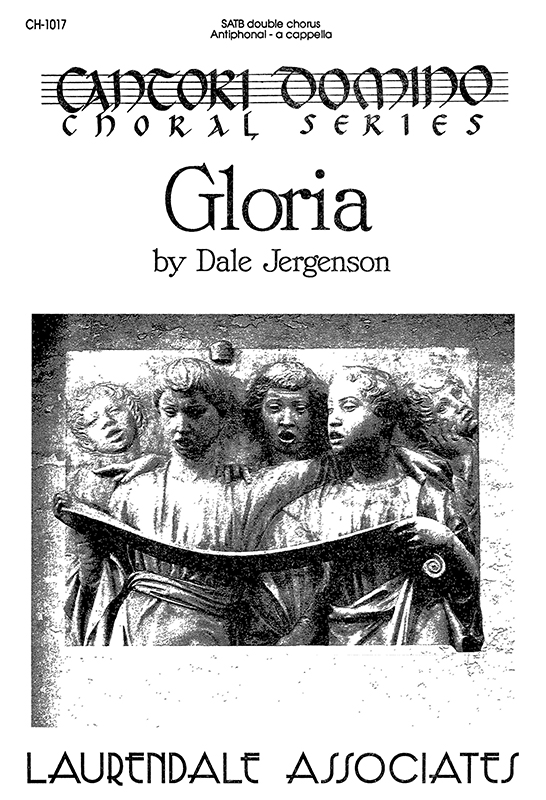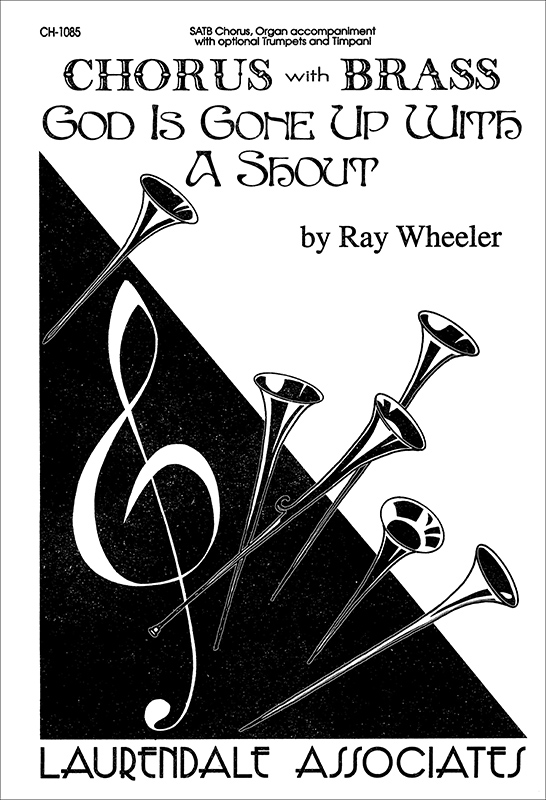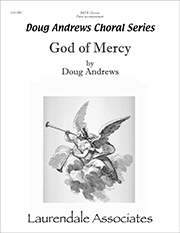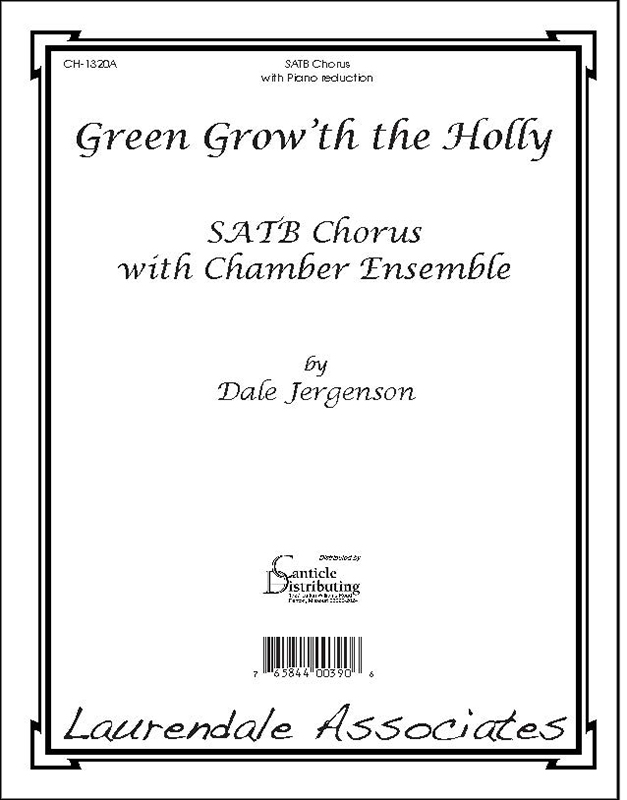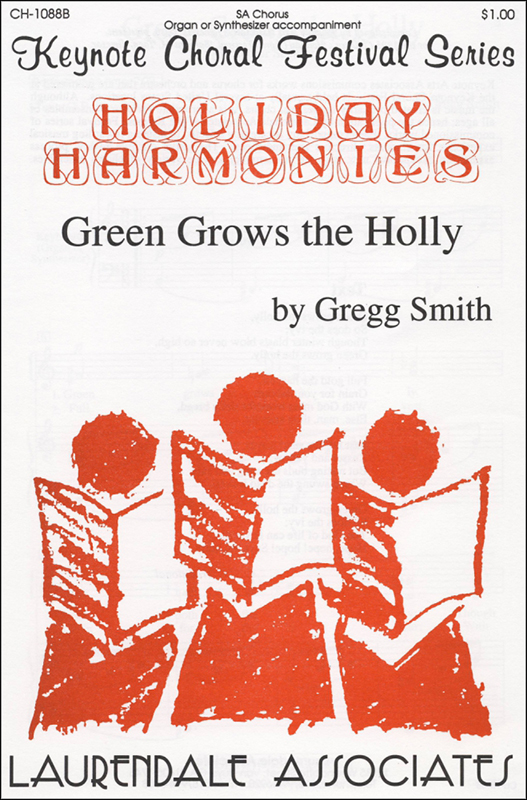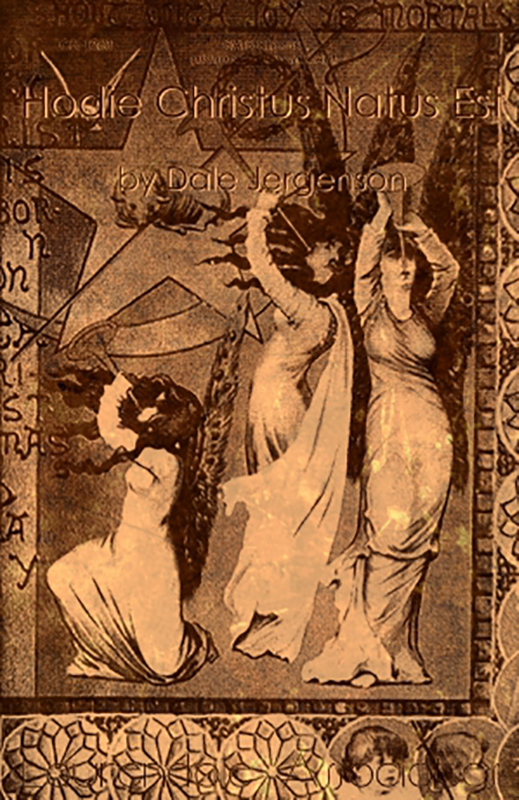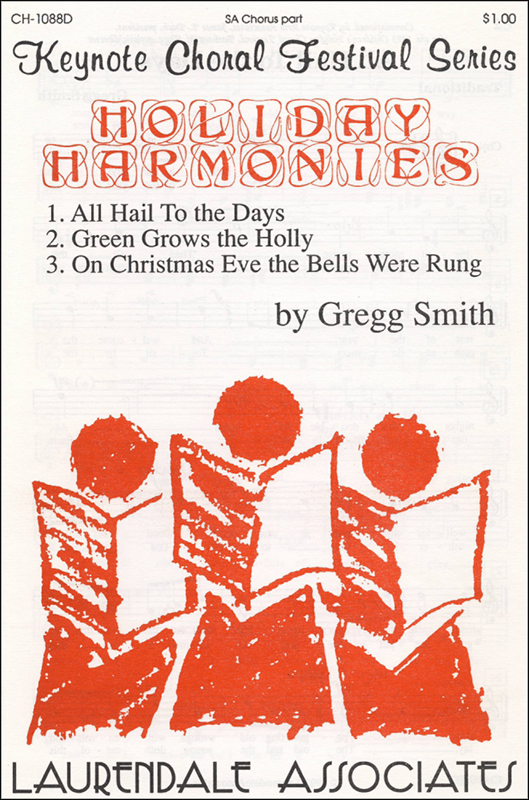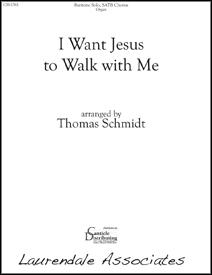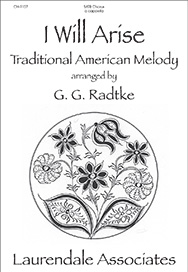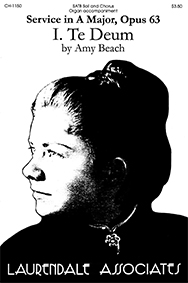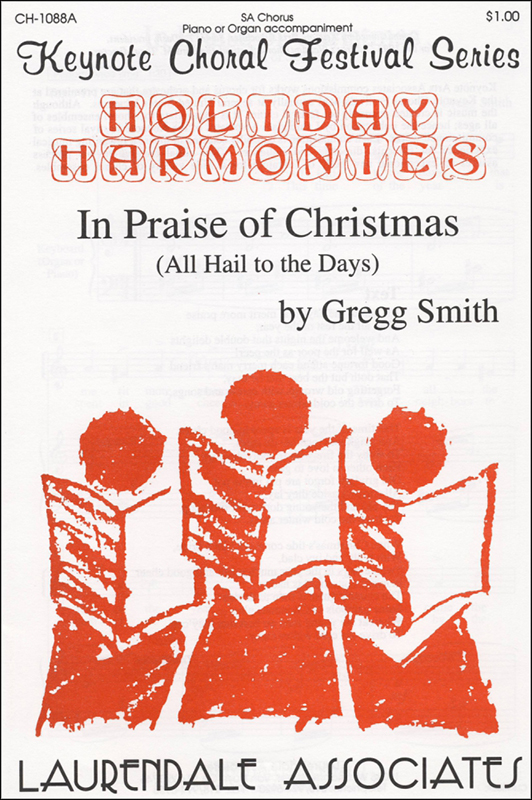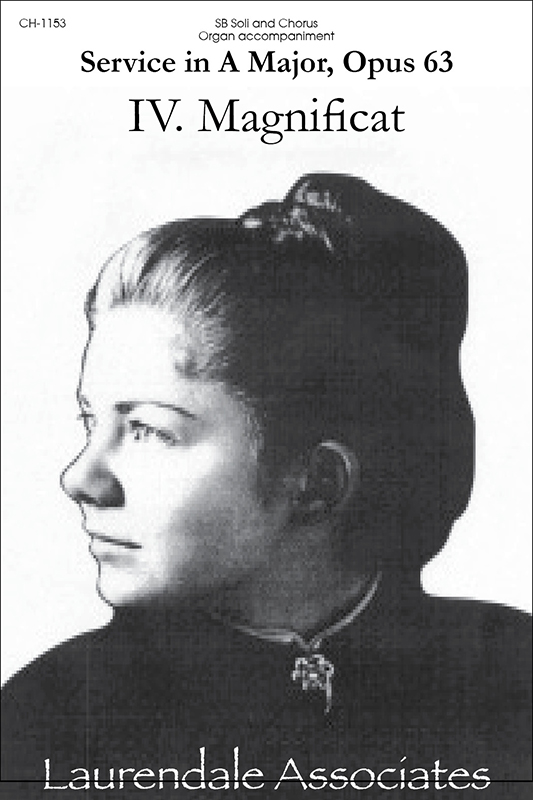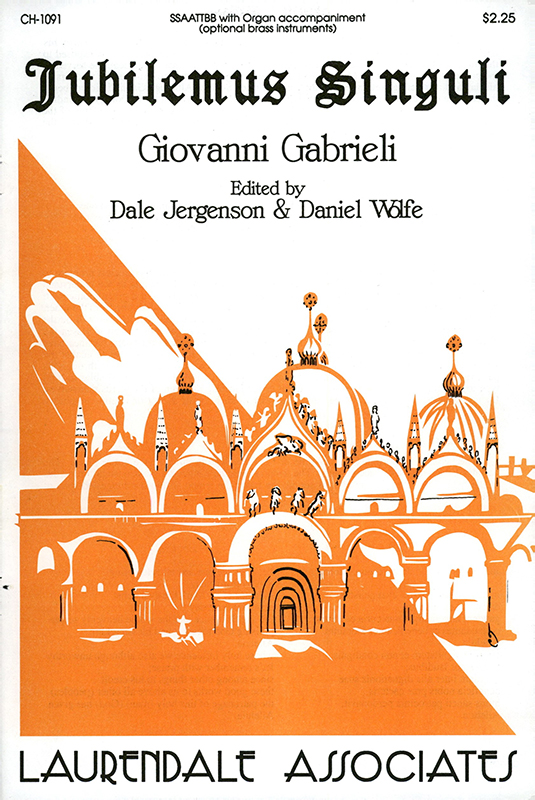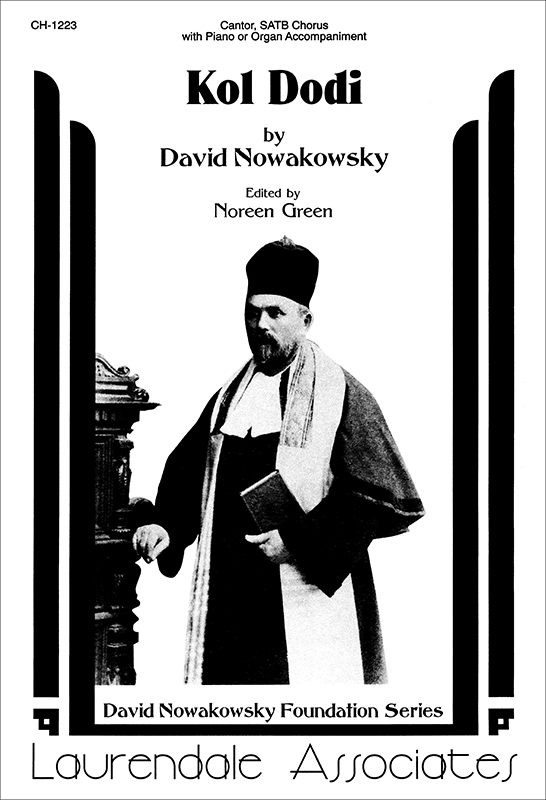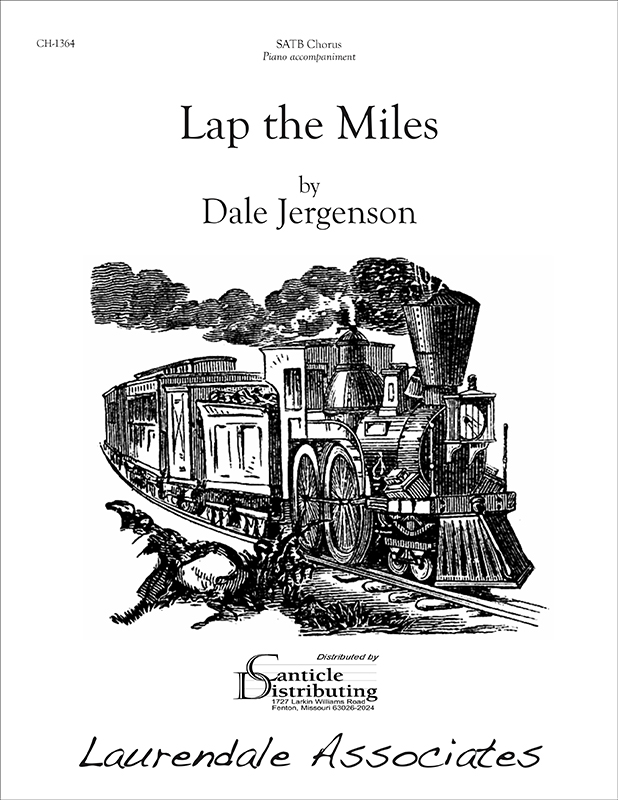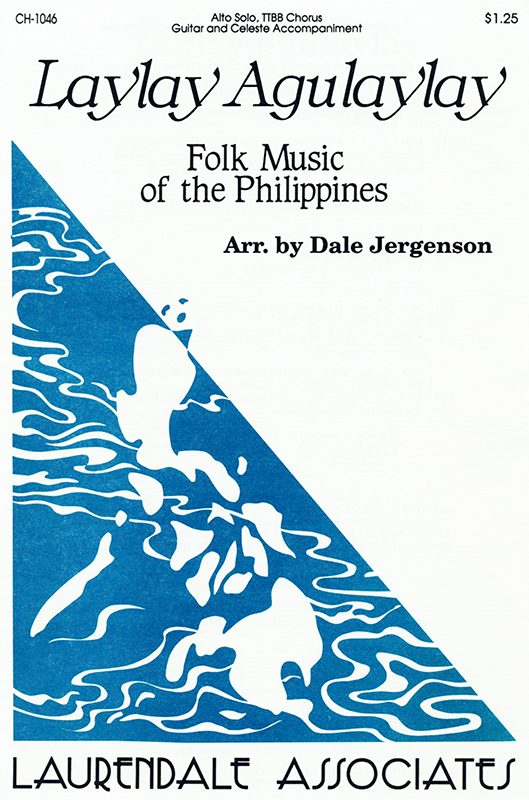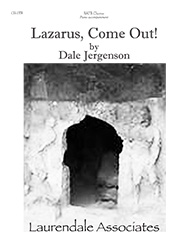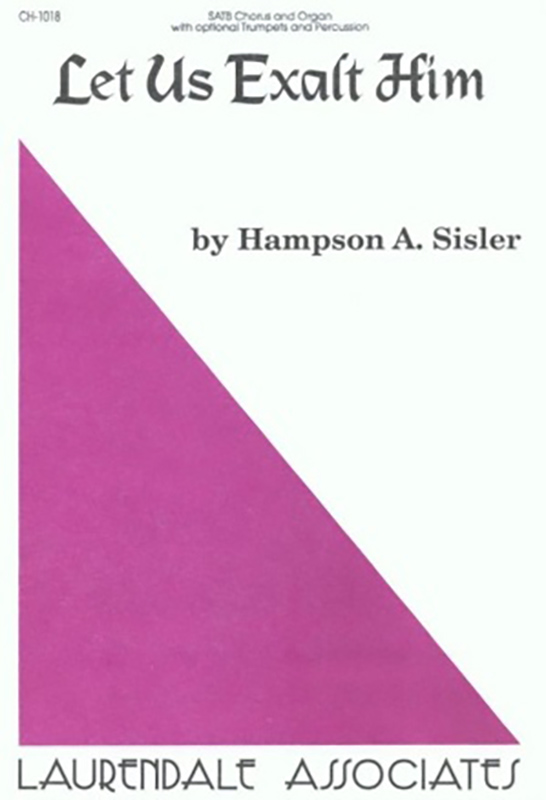In Celebration of the Human Voice - The Essential Musical Instrument
Home | Doo Wop | Barbershop | World | Contemporary | Christian | Vocal Jazz | Choral | Christmas | Instructional | Arrangements
Classical | Opera | Musicals | Personality | Young Singers | Disney | Videos | Songs | The Artists

Sheet Music Series
Laurendale Associates
All | 2-Part | SA | SAB | SATB | SATB divisi | SSA | SSAA | TB | Unison
Individual Folios
Displaying 1-50 of 88 items.
Subtitled Wisdom, from Songs of the Sages. Designed for maximal applicability and adaptability, as few as 2 solo voices of any vocal range are sufficient, in long or short form. This same 2-part version may also be sung by small choruses, hard-put to cover four vocal parts. The piece has an optional cut for either long or short versions, and written out 2-part or 4-part voicing. The Narrator part never coincides with the singing parts. The Suite (all three pieces) has recently been orchestrated for full orchestra by Arkady Letush.
Duration 5:30 or 3:00
Composer: Hampson A. Sisler
Subtitled Knowledge, from Songs of the Sages. Designed for maximal applicability and adaptability, as few as 2 solo voices of any vocal range are sufficient, in long or short form. This same 2-part version may also be sung by small choruses, hard-put to cover four vocal parts. The piece has an optional cut for either long or short versions, and written out 2-part or 4-part voicing. The Narrator part never coincides with the singing parts. The Suite (all three pieces) has recently been orchestrated for full orchestra by Arkady Letush.
Duration 5:30 or 3:00
Composer: Hampson A. Sisler
Subtitled Virtue, from Songs of the Sages. Designed for maximal applicability and adaptability, as few as 2 solo voices of any vocal range are sufficient, in long or short form. This same 2-part version may also be sung by small choruses, hard-put to cover four vocal parts. The piece has an optional cut for either long or short versions, and written out 2-part or 4-part voicing. The Narrator part never coincides with the singing parts. The Epilogue is only to be used when performing all three pieces in the series. The Suite (all three pieces) has recently been orchestrated for full orchestra by Arkady Letush.
Duration 3:10 or 2:10 + 1:40
Composer: Hampson A. Sisler
Robert Southwell, English poet, priest and missionary, was arrested in 1592 under a law banishing members of the Jesuit order from the England of Queen Elizabeth I. He was imprisoned and tortured and in 1495 was tried for treason and hanged. While Southwell's life ended on a gloomy note, the poem is sublime in its simplicity and strength. This setting by Mr. Tucker matches the character of the poem beautifully and makes for a wonderful Christmas anthem.
Duration 2:15
Composer: Dan Tucker
This Alleluia uses only the one word without the customary accompanying sentence referring to a specific occasion or vers. Musically it begins with a rapid, rich sounding 16th note repeated figure in the organ, soon joined by the brass choir and men's voices. The organ figure becomes slower and softer leading to a tempo half as fast as the beginning. Both the voices and brass assume a quiet, meditative quality accompanied by solo stops on the organ. This expands to a fervent forte with a subsequent diminuendo, suddenly becoming the same tempo as at the beginning, with a jazzy 7/8 figure in the brass. The voices take over for a brief time leading to a Gregorian Chant-like section for the voices accompanied by simple chordal figures in the organ. We return briefly to a slow, meditative quality in the brass and voices with a solo flute stop in the organ, finally returning to the beginning tempo with the same opening 16th note figures in the organ. The voices and brass, meanwhile, recap th
Composer: Dale Jergenson
The Asperges me is sung in the modern Roman liturgy as part of the rite of blessing and sprinkling of holy water on Sunday outside of the Easter season (Easter through Pentecost). The text would be suitable as an anthem for Lent (particularly Laetare or Refreshment Sunday) or for other times when the Scriputral readings mention water. Duration c.1:30
Composer: Dale Jergenson
(choral score has keyboard reduction - piano 4-hands) No. 1 from A Mary Trilogy. Quietly, reverently, this setting of the classic Ave Maria text is inspired in its gentle vocal writing combined with a beautiful flugelhorn solo. No full score is available.
Duration 4:30
Composer: Gregg Smith
Ave Maria was composed for the University of Kansas Choirs, and dedicated with appreciation to Simon Carrington (Kings Singers). It was premiered by the Oread Consort at Edington Priori Church in Wiltshire, England in May of 1997. The Gregg Smith Singers brought new life to this work at the 2000 Adirondack Festival of American Music in Saranac Lake, and followed with a recording on the Living Artist series. This piece was inspired by Gy?? Ligetis setting of Lux Aeterna (1966), as well as by Giuseppe Verdis Ave Maria, the scala enigmatica armonizzata a Quattro voci (1898). It is shaped by a series of breath-like harmonic swells leading to climactic homophonic statements of the text, with strident voice pairings yearning for resolution. New York writer Watson Bosler describes the work as an iridescent wash of color as an intricate web of interrelated melodic and rhythmic themesThis Ave hymns not the sugar-water Virgin of Gounod or Scott, but rather the powerful Goddess Yeats depicts: The
Composer: Andrew Bonacci
From Cantata 129. This animated piece is the fifth movement from Cantata 129 for Trinity Sunday and uses its accompaniment to support and contrast the sustained choral parts. Included in this set are parts for optional C and B-flat solo instruments which may be used separately (i.e., two B-flat trumpets or clarinets) or in combination with each other (i.e., C flute with a B-flat clarinet). Optional C and B-flat instrumental parts included with the score.
Duration: 3:00
Composer: Johann Sebastian Bach
Of special significance are the qualities of vocal orchestration in this motet. The principle of contrasting high and low sonorities may be effected in this piece by grouping the top three and bottom three voices on opposite sides of the stage (or auditorium), thereby creating the antiphonal effect which is fundamental to this music. The publication contains scholarly performance notes with text and translation. Music is barred between the staves with accented syllabels of text in bold type.
Duration 3:00
Composer: Dale Jergenson
Utilizing a poem by Lawrence Ferlinghetti, this piece is completely improvised with detailed performance directions included. The chorus members evenly space themselves around the perimeter of the auditorium with the seven soloists on the stage. The singers pass sounds around the hall, from one to the other, as well as perform many sections tutti. The final performance effect is to be a musical/dramatic reading.
Composer: Dale Jergenson
This arrangement combines both the traditional Appalachian Folksong melody that one associates with this title with the original pentatonic mode melody, collected from Mrs. Lizzie Roberts in 1916, that forms the middle section of the arrangement, thus giving the piece and ABA form. Duration 3:00
Composer: Laura Ann Horwitz
A song to Spring with the opening words Spring has now unwrapped the flowers... With the innocence of the children's voices against the full SATB choral sould and the sonorous brass, the lushness of spring is spread throughout the piece.
Duration 6:00
Composer: Dale Jergenson
The Children's Choir of St. Cyril's, directed by Ms Susan Mills, offered a unique opportnity for the writing of a Mass for Full Choir, Children's Choir and instuments. The Irish Harp (also known as the Celtic Harp) was chosen as the sole accompaniment because of the lovely, soft sound of the strings, as opposed to the more bright sound of a standard harp. Two instruments are used because of the lack of tuning pedals on the Irish Harp and the need for an enlarged tonal pallet from that of a single Harp. It was also an opportunity to write a part for Boy Soprano - such a lovely sound when combined with the Celtic Harp.
Composer: Dale Jergenson
Text is in Russian (phonetic) with a translation and pronunciation guide. The story is about a soldier dying on the battle field and telling the Black Raven to fly home to his mother and sweetheart to tell of his love for them. Russian Folksong.
Duration 4:30
Composer: Dale Jergenson
The text for Christ Has No Body was suggested to me by Father Eben MacDonald. During a recent hospitalization I was visited by Father Mac and at that time I asked if he had any favorite Liturgical Text that I could set to music for our choir to sing in our Parish. He introduced me to an extraordinary poem by Saint Teresa on which I eagerly started to work. The result is a lilting setting with smoothly interacting vocal lines challenging only insofar as very legato singing is required. As indicated in the score the accompaniment should be be smoothly flowing. -Dale Jergensen
Composer: Dale Jergenson
The 6th century text, translated by E. Doan, is suitable for wide use. Additional inclusive language by Sisler makes the piece suitable for any denomination. The 2X4 Choral Series designation allows for the piece to be performed in a variety of ways: 2-part a cappella, 4-part a cappella, or either 2-part or 4-part accompanied by keyboard (which uses the 4-part vocal version for the keyboard part).
Duration 1:45
Composer: Hampson A. Sisler
The mood of this piece ranges from subdued and reflective to one of joy and celebration as the ringing of the bells on Christmas day signals the hope for peace and goodwill to all men.
Composer: Dale Jergenson
From the Continental Harmony of 1794. Anonymous text: Arise and hail the sacred day, Cast all low cares of life away... Music is as originally printed by Billings except for the use of modern notation and a line of text for each voice; however, the piano reduction reverses the positions of the tenor and soprano parts, and should the conductor elect, this piece may be performed in this manner. Contains editors performance suggestions.
Composer: Dale Jergenson
A fresh and original setting of Charles Wesley's familiar text, it is an apt celebratory piece for the Advent Season. Each verse has a different musical treatment. Flute part included in the publication. Hyfrydol - Rowland Prichard (18111887)
Duration 4:00
Composer: Christopher Hathaway
These 16 Concert Rounds are a perfect addition to the concert repertoire of advanced children's choirs, middle and high school choirs, college choirs and adult community choirs. In true Gregg Smith fashion, they are filled with sharp dynamic contgrasts, hormonic layering and rhythmic srprises ringing through tongue-in-cheek settings of old sayings. Performance suggestions are included for each round. Contents: 1. Birds of a Feather 2. Don't Counmt Your Chickens 3. Big Oaks! 4. It's All Water 5. The Oak and the Ash 6. A Rolling Stone 7. If You Can't Say Anything Nice 8. A Penny Saved 9. The Grass is Greener 10. A Bird in the Hand 11. Too Many Cooks 12. It's Six of One 13. Give 'em and Inch 14. If At first 15. Two's Company 16. Every Dog
Duration Various - 16 different rounds
Composer: Gregg Smith
Raised in a quintessential Protestant tradition, Eugene's encounter with liturgical worship, and especially the Mass, was breath-taking. His imagination was first set in motion for this piece when he heard the Credo intoned at Grace Cathedral in San Francisco. The drama of this particular piece clearly occurs in the organ accompaniment as the choir and congregation recited the entire credo on a single pitch. Credo received this response on tour in the Czech Republic: ...deep artistic and human expression...the strongest probably provoked by Stravinsky's Symphony of Psalms...and the exciting Gerlitz' Credo (translated from Pojizerski Listy, 11 August 93, Vladmir Havrada, critic).
Composer: Eugene Gerlitz
About the Music: This spititual is in the"Call and Response" style. The soloist (leader) sings the Callpart, and the choir, group, or congregation replies singing the Response. This is a very popular celebration spiritual with many verses. The leader would make up the verses as he/she would go along."We took out the sword and shield and put in boxing gloves. This gave students something they could relate to at the Collegiate School in Manhattan". Traditional Spiritual
Composer: Roosevelt Credit
Suite contains: 1. The Dawn of Spring, 2. Summer Day in the Garden, 3. Autumn Night Song, 4. Snow on the River. The four pieces relate directly to the four seasons. All are build on Chinese music models with vocal sounds imitating Chinese instruments.
Composer: Francis Baxter
This rhythmically dynamic composition uses the complete Latin text, but has been conceived as a concert piece for good choral ensembles. It received its first performance by the Los Angeles Master Chorale and was subsequently used on tour by the Roger Wagner Chorale. Note: A full orchestra score exists, but is not available at this time.
Duration 4:37
Composer: Dale Jergenson
Care should be taken to sing phrases in a legato manner, with special attention given to maintaining support of the tone when singing longer notes that occur in the middle of a phrase such as in m. 8. Strict adherence should be taken to the dynamic markings for maximum interpretation of the text. A spirit of reverence should be maintained throughout the piece.
Composer: Doug Andrews
Commissioned by Cantori Domino, this setting of the anonymous text has a Tudor or English feel throughout the whole piece. Piano or Chamber Orchestra: Flute 1 & 2, 2-3 oct. Hanbells, Harp, Percussion and optional Bass.
Duration 3:00
Composer: Dale Jergenson
Winner of the 2005 California ACDA Composition Competition. Commissioned by Richard Basal for his friend and accompanist, Louise Basal. The energetic and demanding piano part gives this Hodie a special vitality for this splendid and time-honored text. The contrasting middle section with its chant-like movement sets up the big ending.
Duration 4:40
Composer: Dale Jergenson
Commissioned for the 1993 Children's Choral Festival at Disney World in Orlando, Florida, Barbara Tagg, artistic director.
Includes:
1. In Praise of Christmas
2. Green Grows the Holly
3. On Christmas Eve the Bells Were Rung.
Percussion includes Glock & Chimes (or 5 octave Handbells), Celeste. Duration 5:00
Composer: Gregg Smith
This Traditional American melody is arranged in unison, homophony and canonic sections to bring the text to life: Come ye sinners, poor and needy, weak and wounded, sick and sore; Jesus ready stands to save you, full of pity, love and power. American Folk Hymntune. Duration 1:35
Composer: Nick Strimple
The Te Deum is the opening and most extensive movement of the Service in A Major, Opus 63, and contains the only solo work for alto and tenor. The opening choral unison , preceded by an exuberant imitation of bell-ringing in the organ, sets the stage for a very festive work. The entire Service in A Major forms a very effective 37 minute concert piece. In keeping with its primary function as a work for the Episcopal liturgy, each movement stands alone quite well as an attractive, independent composition in the late Romantic style. English text.
Duration 9:00
Composer: Nick Strimple
Newly composed without the use of preexisting material, as in Te Deum, the composer maintained a visual connection with the English Cathedral tradition through the use of half-note beats. This device, which lends the music an archaic look, is never-the-less a great nuisance to early 21st century performers who are accustomed to reading quarter notes. We have therefore halved the note values for easier reading, so that the music now moves in quarter note pulses. This edition is based on the good manuscript copy which Mrs. Beach provided the A.P. Schmidt company. The organ part has been placed on three staves. All editorial marks are placed in brackets and consist of dynamic indications and accidentals which the composer obviously omitted by accident.
Duration 8:20
Composer: Nick Strimple
Special liturgy of St. Mark and peculiar to Venice. Scholarly performance notes with text and translation. Music is barred betweeen the staves with acented syllabels of text in bold type.
Duration 2:47
Composer: Dale Jergenson
Kol Dodi is one of Nowakowsky's few secular pieces. The text, from the Shir HaShirim (The Song of Songs book of love poetry), is musically set in two parts. The piece repeats the AB form and accelerates to a frenzied ending. There is a classic recording sung by the great cantor Moshe Koussevitsky, who performed this piece as part of his concert repertoire.
Duration 4:30
Composer: David Nowakowsky
The opening figure in the piano is a sort-of whoo-whoo of a train whistle and the rhythmic figure starting in m. 6 is supposed to be descriptive of a steam engine chugging along the track. Thomas H. Johnson, in his Introduction to Final Harvest, a collection of Dickinson poems, posits that Emily used dashes as a musical device and capital letters as a means of emphasis. He further writes that she deliberately fractured grammar to achieve special effects. I like to see it lap the Miles is testimony to Johnson's analysis and apparently celebrates that exciting form of transportation in the 19th Century, the railroad.
Composer: Dale Jergenson
Text is in Tagalag with translation and pronunciation guide. song is about a young man (Ondo) and a young womnan (Inday), marriage and a feast featuring Philippine vegetables. Original folksong material collected by Priscilla Magdamo Abraham. Philippine folksong.
Duration 2:42
Composer: Dale Jergenson
Using the poem"A Hymn for Lazarus" by Kim Norton Rich,"Lazarus, Come Out!" is cast in a Gospel type setting with rhythms typical of this genre of choral music. c. 4:30
Composer: Dale Jergenson
 |

|  | |
| Page: | 1 | 2 |
![]() Vocal Harmony Arrangements - Home
Vocal Harmony Arrangements - Home
Christian | Gospel | Standards | Musicals | Specialty | World | Barbershop | Contemporary | Vocal Jazz | Choral | Christmas
Mixed Voices | Female | Male | 8 Parts | 6 Parts | 5 Parts | 3 Parts | 2 Parts | Medleys | Solo | Folio Series | New Releases
Select a Category |
Want to Sing? - Find a Chorus Near You
List of Choruses by State | List of Choruses by City

